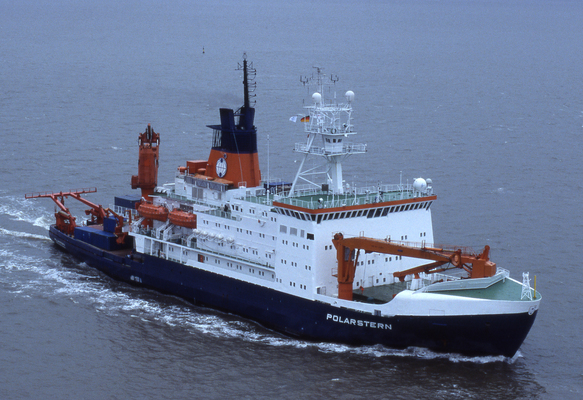
by Erin Wayman Thursday, January 5, 2012

Researchers sailed to the southwestern Atlantic aboard the RV Polarstern. Alfred Wegener Institute
The argument over whether ocean iron fertilization is a good way to sequester carbon dioxide may be coming to an end. Last month, a group of researchers seeded 300 square kilometers of the southwestern Atlantic Ocean with six metric tons of dissolved iron. Just as researchers hoped, algae bloomed, doubling in biomass within the first two weeks of the fertilization. But then, an unexpected guest showed up: tiny shrimp-like crustaceans that dined on the algae. Therefore, much of the algae — and the carbon dioxide they absorbed — didn’t make it to the deep ocean where scientists had hoped the gas would have been sequestered for hundreds of years.
Part of the problem was the type of algae that bloomed. In previous experiments, which have observed more carbon sinking, diatoms were the major component of the algal blooms. Diatoms have hard shells that protect them from hungry crustaceans, but they only grow if there is enough silica in the water to make their shells. In the new Lohafex experiment, led by researchers from the National Institute of Oceanography in India and the Alfred Wegener Institute in Germany, diatoms did not bloom because recent natural blooms had exhausted the silica supply, the researchers say, making the extra iron useless to the diatoms and therefore available to other types of algae. Because the Southern Ocean (where geoengineers want to conduct commercial-scale iron fertilization) naturally has low levels of silica, the researchers say iron fertilization is probably not an effective way to remove carbon dioxide from the atmosphere.
© 2008-2021. All rights reserved. Any copying, redistribution or retransmission of any of the contents of this service without the expressed written permission of the American Geosciences Institute is expressly prohibited. Click here for all copyright requests.